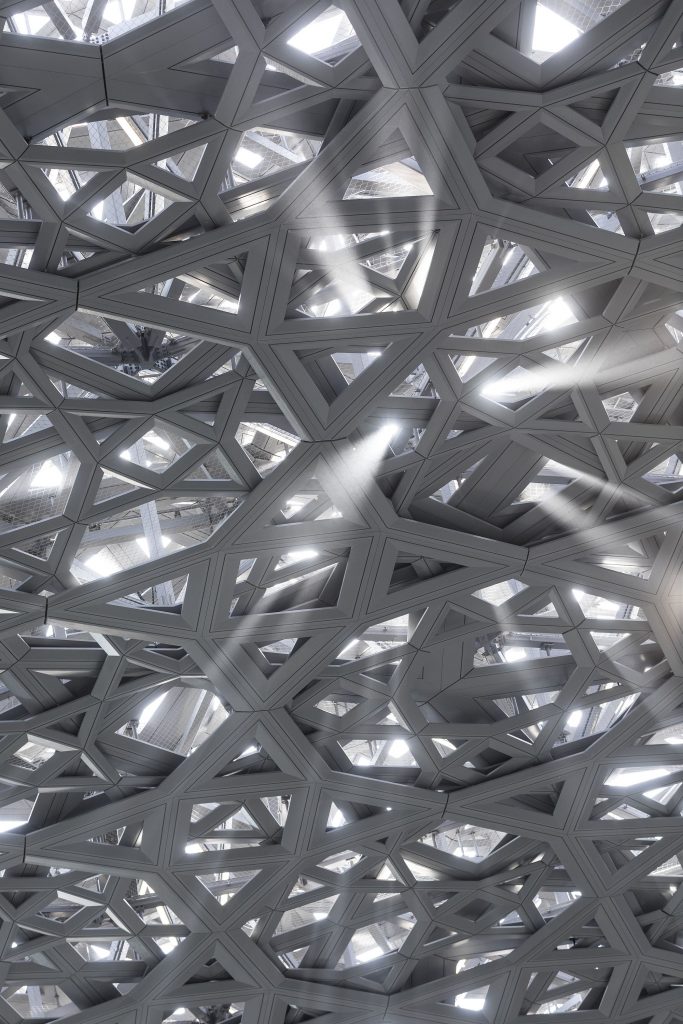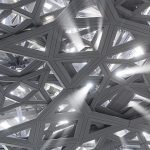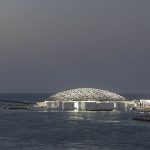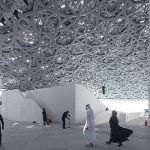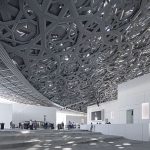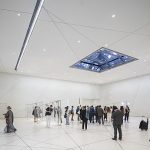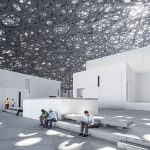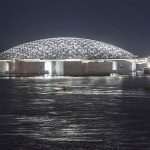Text: Ștefan Ghenciulescu
Photo and on-site research: Laurian Ghinițoiu
It is very difficult to speak, in an architecture magazine, of those “instant icons” produced by starchitects, famous on the spot, and even afterwards extensively publicized. The avalanche of images leads to saturation and, as easily recognizable as they are, the less patience people have, to learn something or to analyse. It’s as if one has nothing left to choose or say. When they storm the conventional media or, nowadays, the social networks, works like the Bilbao Guggenheim or the Beijing’s “bird’s nest” can hardly find their natural place in professional publications.
We have decided to do it in this instance, for three reasons: our colleague Laurian Ghinițoiu was there, and we could benefit not only from his pictures, but also from talking to him of how he found it; then, this is a very representative case for how urban development, monuments, and culture, are made nowadays; and, finally, because Jean Nouvel’s project is definitely not a masterpiece like his Institut du Monde Arabe (which turns 30 today!) but neither is it, as we shall see later, just a new addition to today’s gallery of blockbusters.
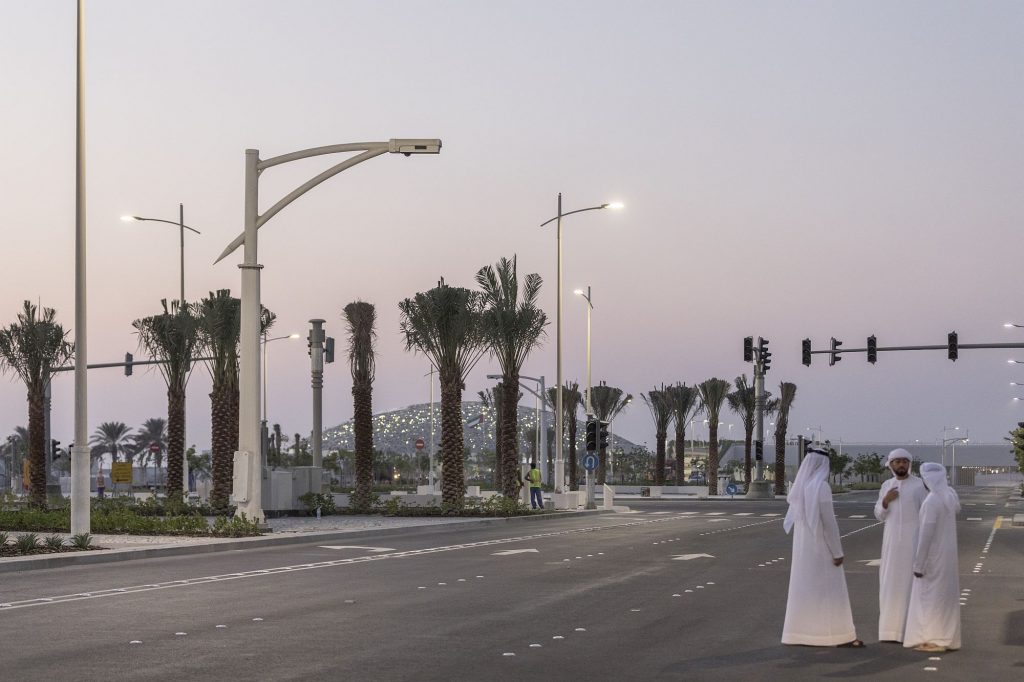
Politics, ego, money, and franchise
The Guggenheim was the pioneer in franchising museums: you give a hugely prestigious name, perhaps some art on loan, therefore warranty and contents for a new cultural institution, and you also forward a respectable invoice. In the case of the Louvre, it is both about the money, and the politics. The first franchise was, in fact, internal, in an act of the famous de-centralization policy (political, economic, and cultural) – that obsesses the French so much. Louvre Lens was also designed by famous architects (Sanaa – see the article in Zeppelin issue 117), but that is about an institution that depends on the one in Paris. On the other hand, the recent department of Oriental art from Original Handcraft was sponsored vigorously from the Middle East.
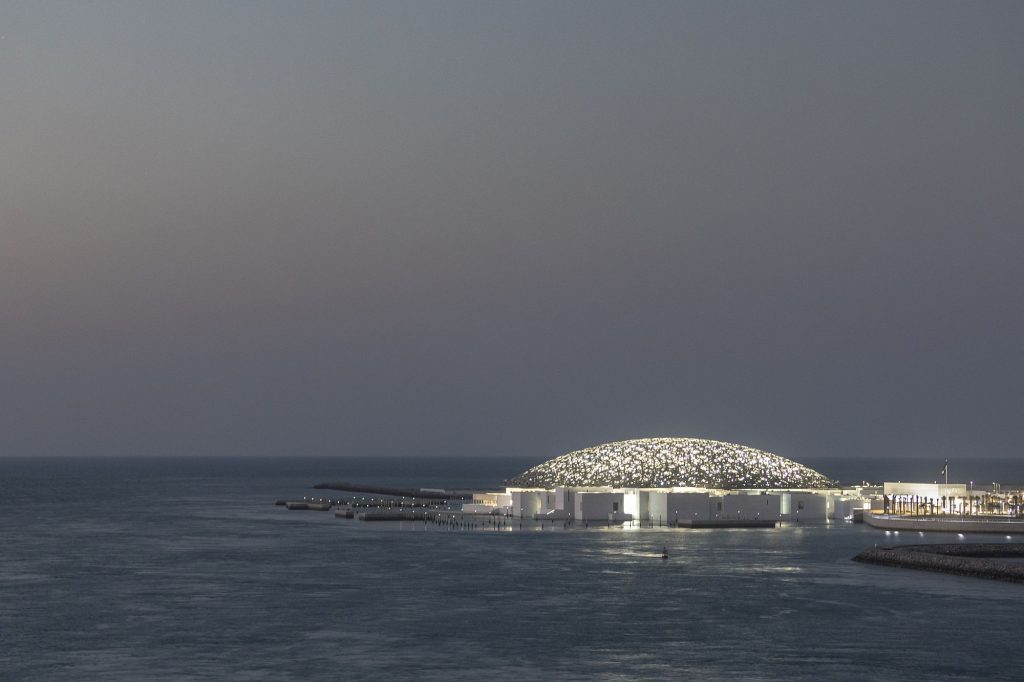
Great culture becomes thus an important instrument in a grand political game. But the invoice itself is not negligible either: for the Abu Dhabi Louvre, of the total budget’s approximately 750 million, including construction, loans, various exhibitions and actions, nearly 390 million are paid for using the brand over 30 years. (The information derives from Kanishk Tharoor ‘s excellent article in The Guardian, The Louvre comes to Abu Dhabi. Less is said of architecture, and the tone is very critical.)
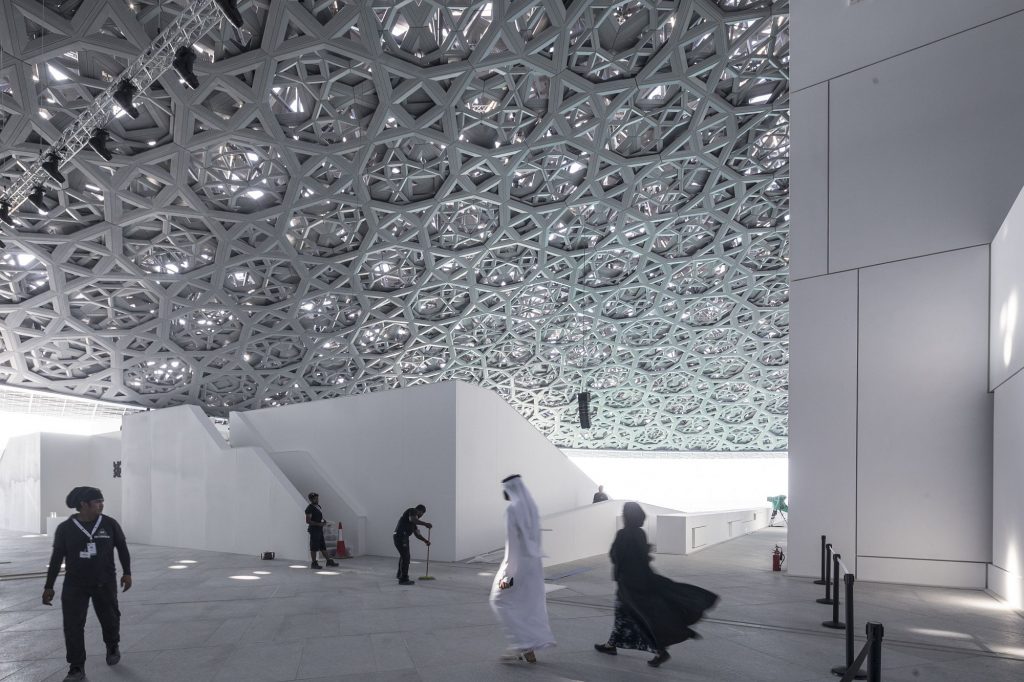
Even before it started to operate, the museum was harshly criticized. People wrote about the problem of the instant import of culture in the absence of a society that should support it and claim from it, of the museum being the expression of immeasurable ego, of ultra-authoritarian political power and propaganda, rather than a veritable cultural act, and so on; instant culture for instant cities, in countries which are, from many points of view, still living in the Middle Ages.
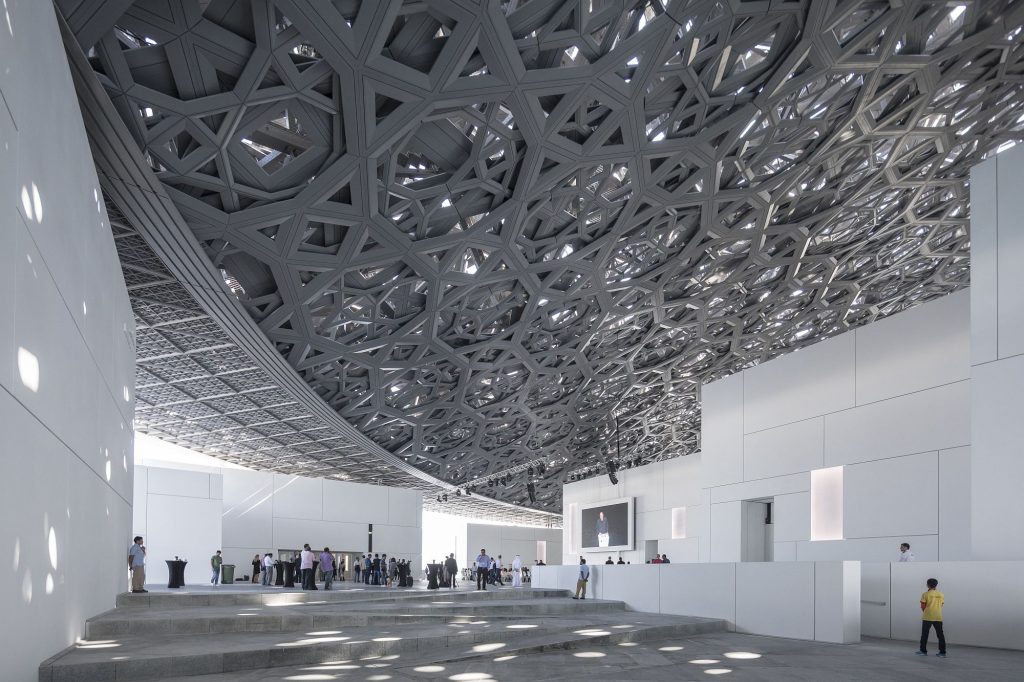
Significantly, the museum is not somewhere in the existing city, but on the Saadiyat artificial island. Not alone, since it will share the island with villas, malls, entertainment venues, but also with an entertainment space designed by Zaha Hadid. It is still in Abu Dhabi that a (and a grinning emoticon should be inserted here) gigantic Guggenheim museum will be built, obviously, another Gehry product.
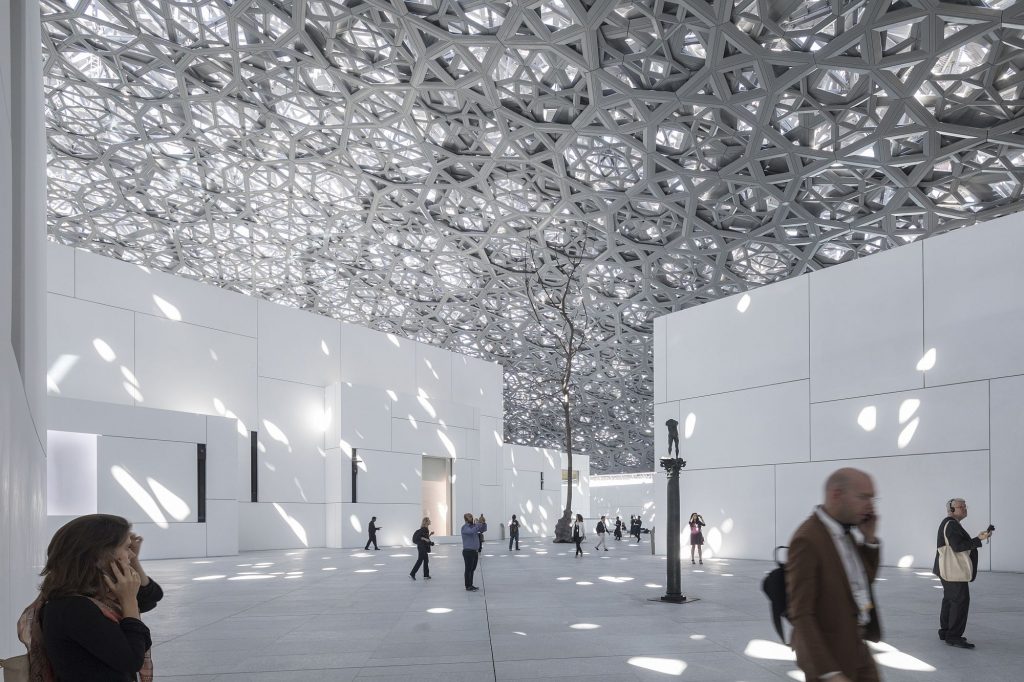
Yes, this is an issue, this sum of excesses, this assumed waste. The cultural transport en masse is also bothering, the museum that ends up a purpose in itself, the mall as a basic reference, also for culture, and which clearly devalues it, and a lot of other things.
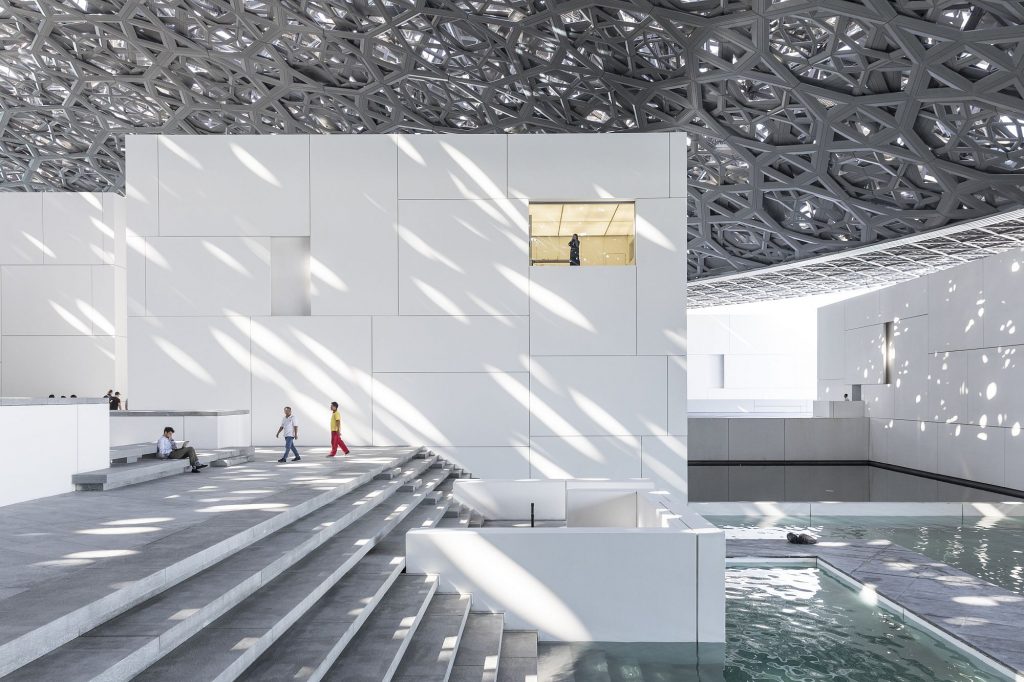
We seem very, very far away from that which classical museum used to mean – a temple of knowledge, dedicated to the careful preservation of precious things and to the memory and education of a society of citizens.
It’s true, and I admit not to be part of the fans of this new operation. On the other hand, with the tiniest honesty you must admit that the connection between the political power, the national or local identity, ego, and museum, has been there ever since the dawn of the institution. Not to mention the Pergamon altar, the Parthenon sculptures and so many other things, that were not loaned on contract, but were simply taken.
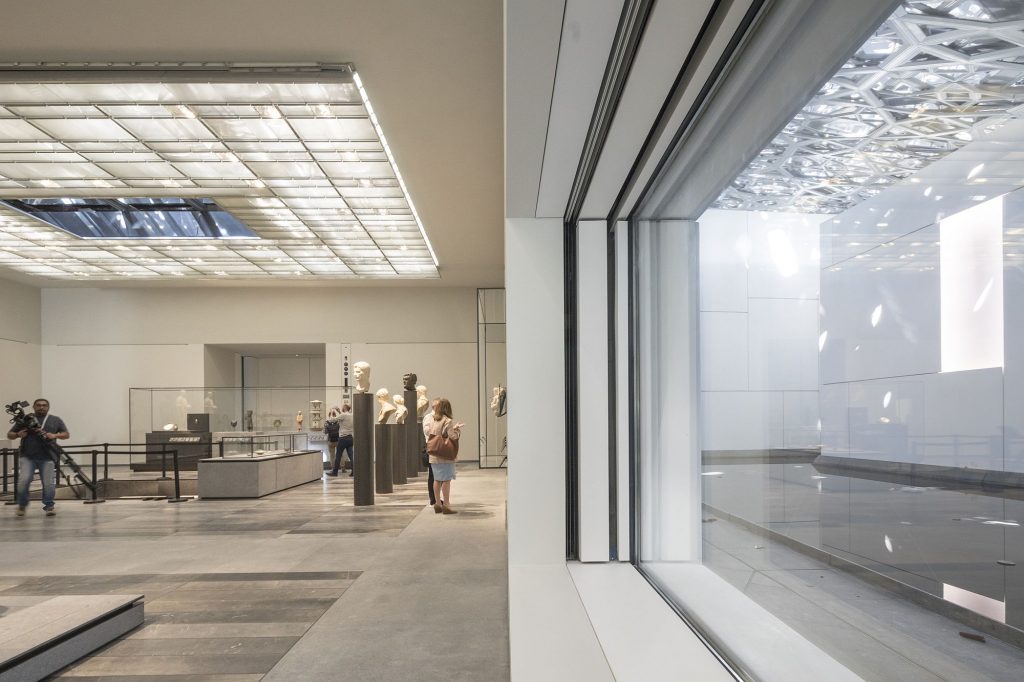
Things really are a little more complicated than that. Some people say, and the argument is worth considering that, while this museum may also be some kind of instrument and expression of power, but that it will also play its role in education and opening, perhaps more than the emirs wish it to.

It will be open for the local public, who will see not only the treasures of the Western world, which is so discredited over there, but also those of their own Islamic culture, of remote Asia, of the Americas, and so on.

The collection has an extremely international character. It will undoubtedly be immediately included in the standard tourist circuits and maybe the hijacking game between consumption and cultur could go both ways.

One goes to the beach, to the mall, and the bus also drops you to the museum… This remains to be seen.
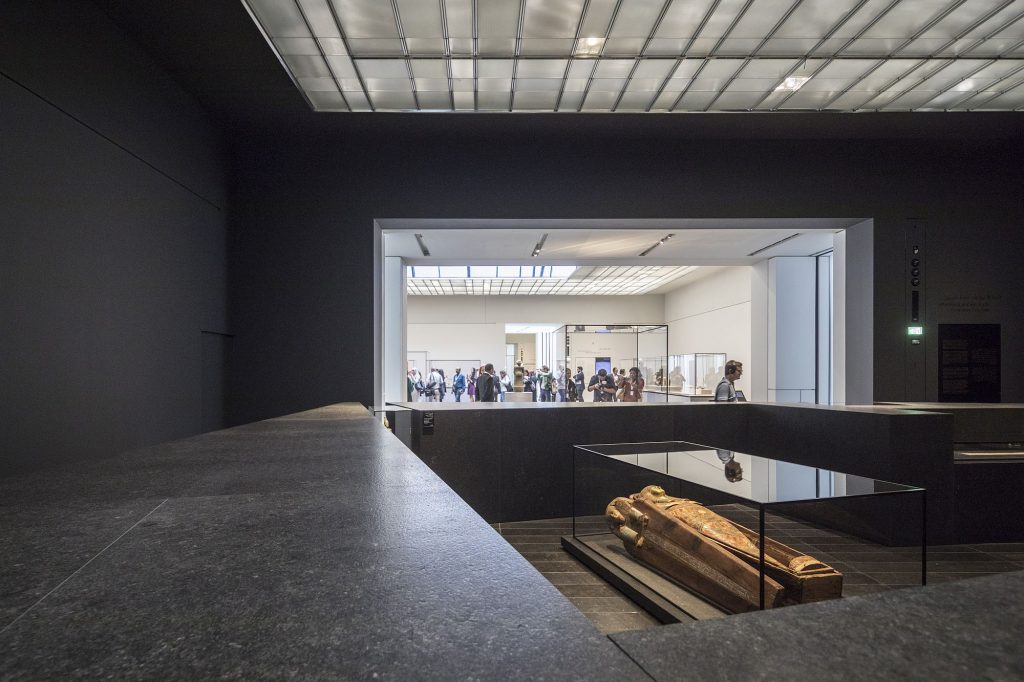
Mediterranean building culture and an exterior public place
At the end, we should also talk about architecture a bit. From the talk with Laurian Ghinițoiu, we found out that the museum looks good in reality as well, not only in the pictures. More important than that, unlike most muscled architectures in the last decades, it is not completely out of context, as it has happened with most muscled projects over the last decades.
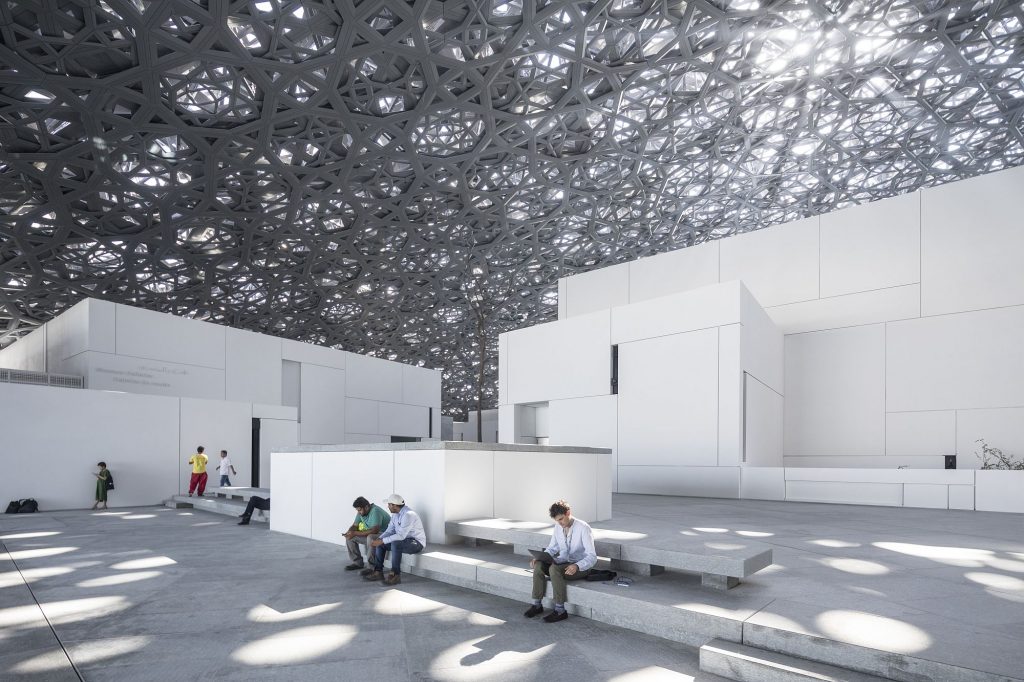
There is a sense of place and reinterpretation: the filtering of the light of classical Islamic architecture, transposed in the Institute of the Arab World through metallic diaphragms, is here performed by a giant roof, floating over the buildings of the museum itself. Laurian says that, indeed, the passage from outside to under the roof is instantly felt, from the point of view of thermal comfort. It is a good place to stay for a while and the light is very beautiful. The reinterpretation is, therefore, not only formal, epidermal, but also substantive. Besides, the gesture of fragmenting and reuniting under a great roof has results that depart radically from the obsession of the object, which is so typical to today’s architectural architectural hype . Nouvel truly creates a space, an exterior public space, and this in a urban context where the public life is practically exclusively carried out inside. Which, let’s face it, is not bad at all. Perhaps it is only related to the architectural sensitivity which is not yet fully dulled by celebrity and mammoth projects; or perhaps, who knows, starchitecture itself is finally walking down a more civilized path.
